It has been torture waiting for plywood day! We put the upstairs floor joists up, and I thought the very next day I'd be getting a sun tan on a roof top deck.
Not so much the case ... we built stairs, backfilled, insulated ... just to name a few projects that had to get done as I tried not to glance up at those open floor joists ... and finally it's plywood day. (I'll be blogging about all the other projects we've been up to as well in the next coming bit).
Hooray for plywood day!

Every once in a while, I have been sneaking up to sit on the floor joist, just dreaming of this day! In my mind, there's even a waiter with a tray full of drinks with little umbrellas. We put the floor joists in in this post.
And this is how we lay the subfloor on top of those floor joists ...
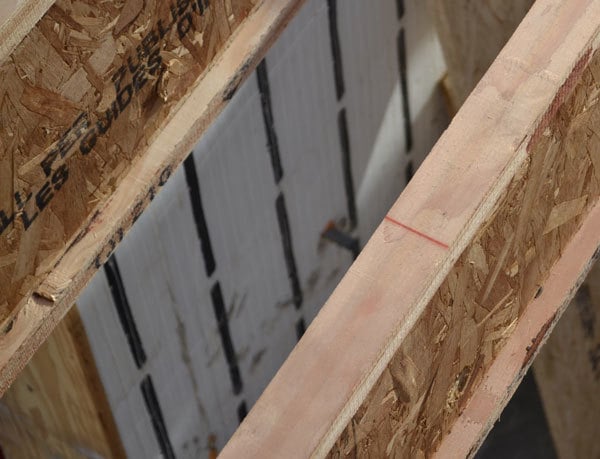
On the tops of the floor joists, we measure and mark every 4 feet - this will be the plywood seams. Chalk lines are pulled all the way across all the joist tops at the 4 foot marks so we can check our accuracy with each sheet of plywood being attached to the joists. These chalk lines run the entire depth of the Momplex, perpendicular across each floor joist, every four feet.
The chalk lines serve as guides. When you are going 44 feet wide, if you get off 1/8" here, 1/4" there, a hair over there ... you'd be surprised at how fast that can add up to inches!
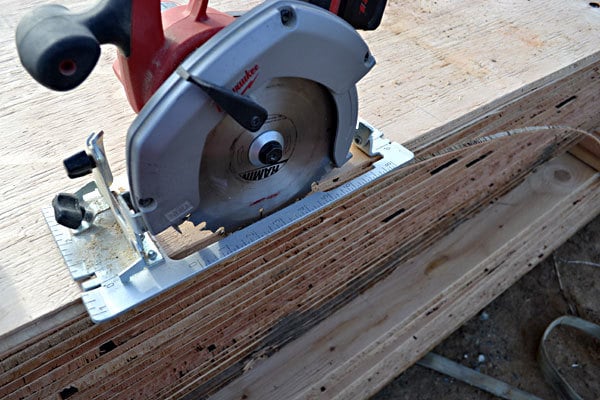
For subflooring, you use tongue and groove plywood. The tongue and groove are only along the 8 foot edges. On the four foot edges, your seams will fall on joist tops, so no need for tongue and groove.
But to start off, we will need to remove the tongue so the plywood is tight with the exterior ICF walls.
Pretty simple step here ... I just set my saw blade to the depth of the plywood and ran it down the edge, removing the tongue. Remember, you only do this for the first row of plywood.
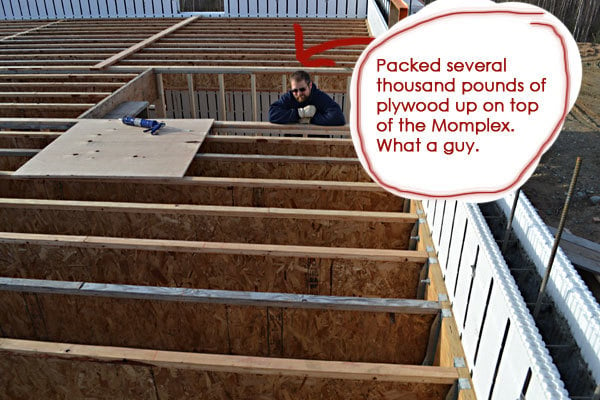
Sheets of 3/4" plywood weigh as much as 90 pounds!!! I was so thankful our cousin Justin was here to pack plywood upstairs. We started first with a 1/2 sheet.
Tell me, does anyone else feel like they are getting stretched apart hauling a full sheet of anything? Here's wishing plywood was like 45" wide, or I was like three inches taller.
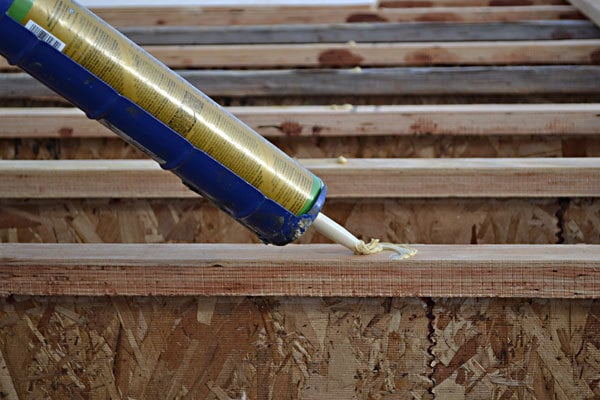
Subflooring glue is applied to the tops of the joists. The right glue is very important here, it's what keeps your floor from squeaking.
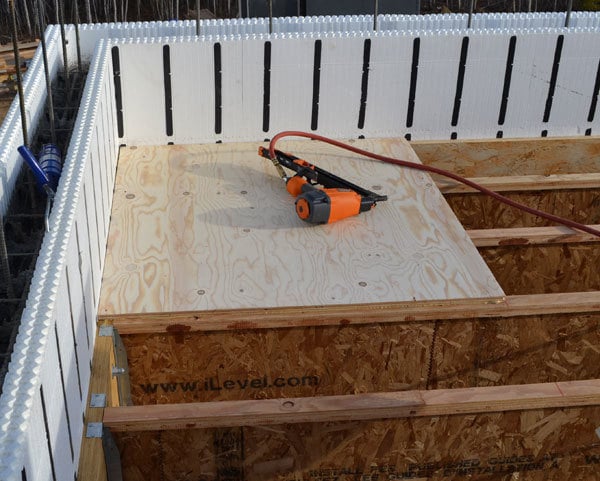
And the plywood is layed on top of the joist

Matching up with the chalk line, reaching the center of the joist. You can see on the non tongue and groove side of the plywood, joints are made in the center of the joists.
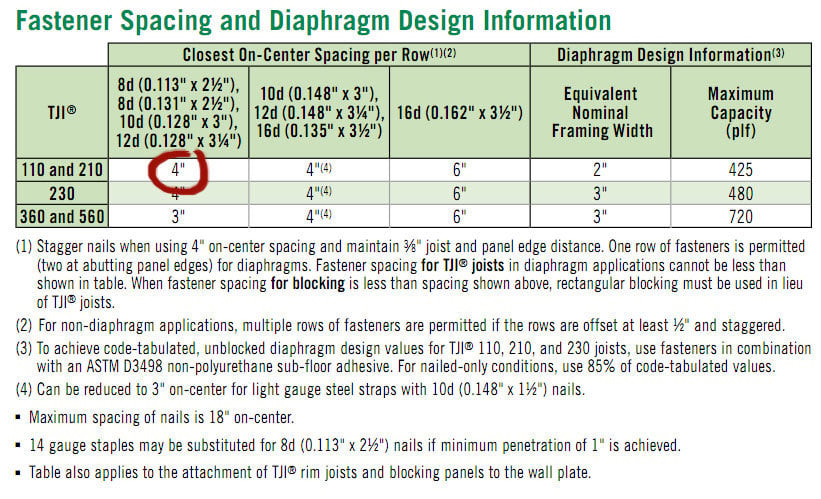
We consulted the manufacturer of our floor joists for nailing recommendations. Nails need to be 8d, spaced every 4" and staggered.
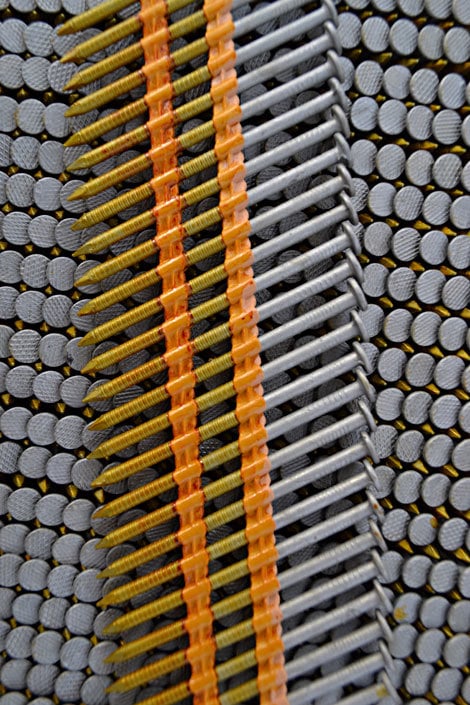
We are using ring shank nails, or nails with rings on their shanks. The rings help to keep the nails from easily popping out (creating a potentially squeaky floor). Also, these nails come coated in a glue on the shank, further helping keep the nails nailed down. Nobody likes a nail popping up in the floor!
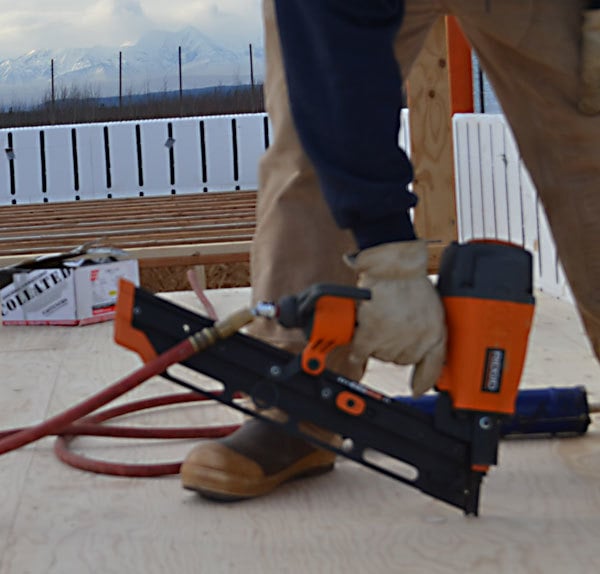
And then the plywood gets nailed down!
Coming from past experiences of screwing down subfloors, this really felt like we were cheating.
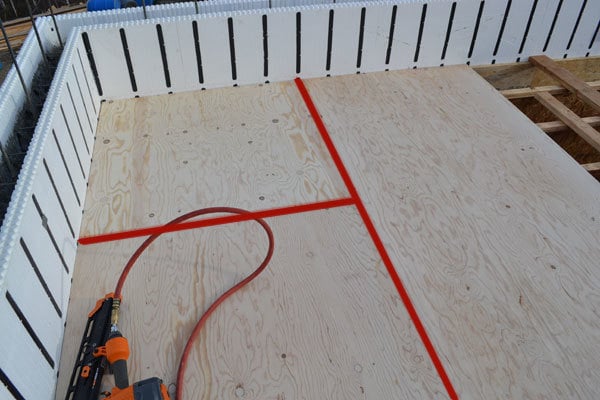
More plywood sheets are nailed down, staggering seams for a stronger fit. When you build, you always stagger. It's what makes a pile of boards and materials into a solid structure. Stagger stagger. We did this by simply starting with a 1/2 sheet of plywood on the first row, followed by a full sheet of plywood on the next row. You guessed it, we'll be back to the half sheet on the next row.
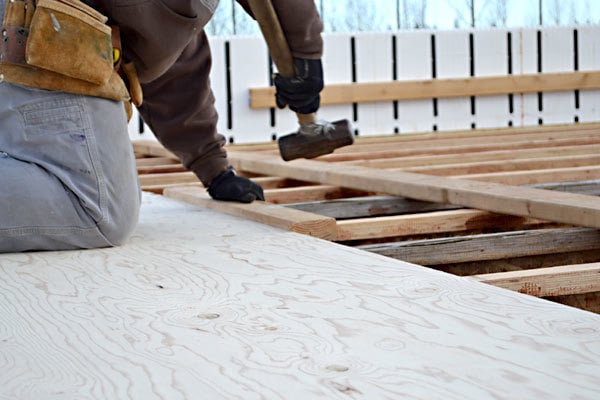
New sheets are carefully pounded in place with a block protecting the open groove side of the plywood. If you did this without a block, it would destroy the groove and make fitting the next row of plywood very difficult.
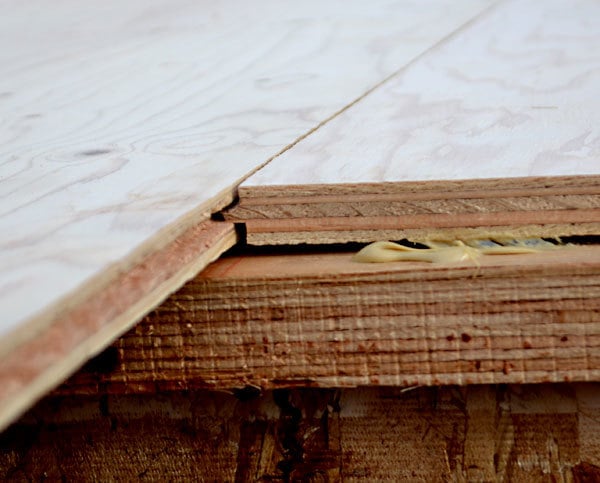
Just a tiny bit more!
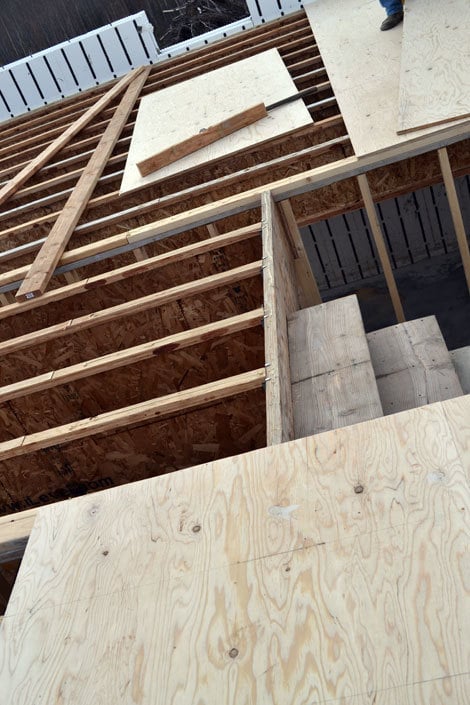
When we got to the stair openings, we kept to the pattern (pretending there is no stair opening) and nailed the subfloor down on the other side.
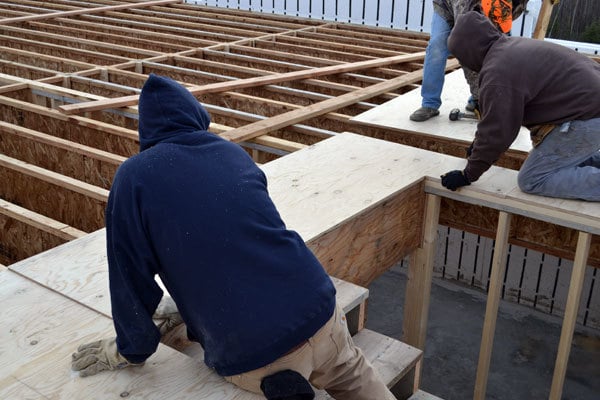
Then when we went to put the remaining piece in, everything keeps to the pattern, fitting just right, like a perfect puzzle, only the pieces are 48" x 96" and weigh 90 pounds. Not exactly a Melissa and Doug puzzle!
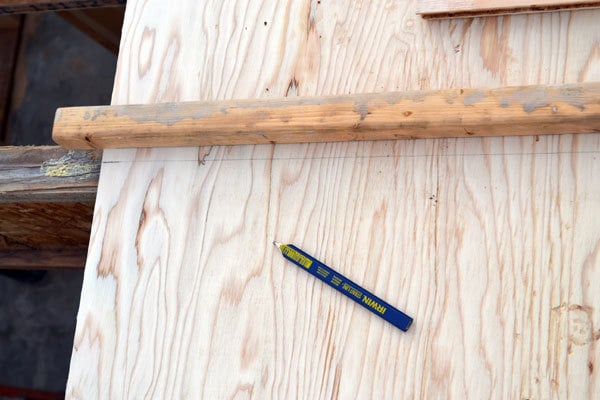

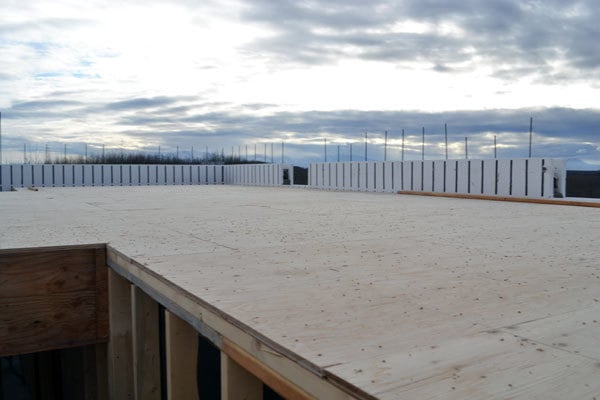

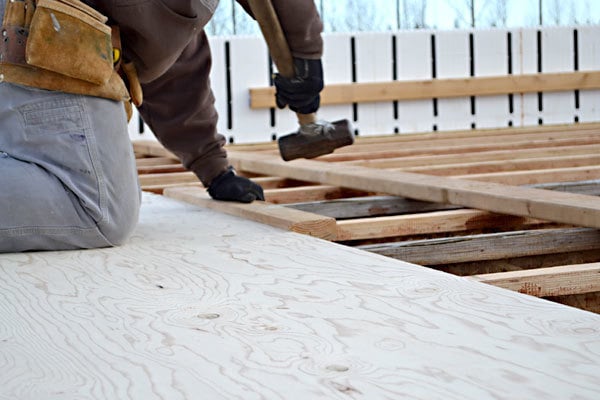
Comments
ferbit
Thu, 10/13/2011 - 11:12
Yay!!!!
emmarosemc
Thu, 10/13/2011 - 11:13
That looks amazing!!
Guest (not verified)
Thu, 10/13/2011 - 11:23
Great Job
Sara (not verified)
Thu, 10/13/2011 - 11:31
details, details
loniwolfe
Thu, 10/13/2011 - 11:31
That photo of you 2 is
Nona (not verified)
Thu, 10/13/2011 - 13:42
Only you could look so good
Jenn Hoff (not verified)
Thu, 10/13/2011 - 22:09
The best part of going on
Robbi Montgomery (not verified)
Fri, 10/14/2011 - 07:23
Momplex Details...
Cindy from Indiana (not verified)
Sat, 10/15/2011 - 09:29
Carhartts are the new fashion accessory! Who knew?!
Ana White
Sat, 10/15/2011 - 10:31
Thanks everyone! @ Cindy
Alanna B (not verified)
Thu, 03/15/2012 - 19:19
you are such an inspiration .. just amazing
zannej
Thu, 01/03/2019 - 22:47
Thanks for sharing this!
Did you leave any expansion gaps between the short ends of the plywood? Somewhere I saw something about leaving 1/8" gap.
What tape did you use on the seams?